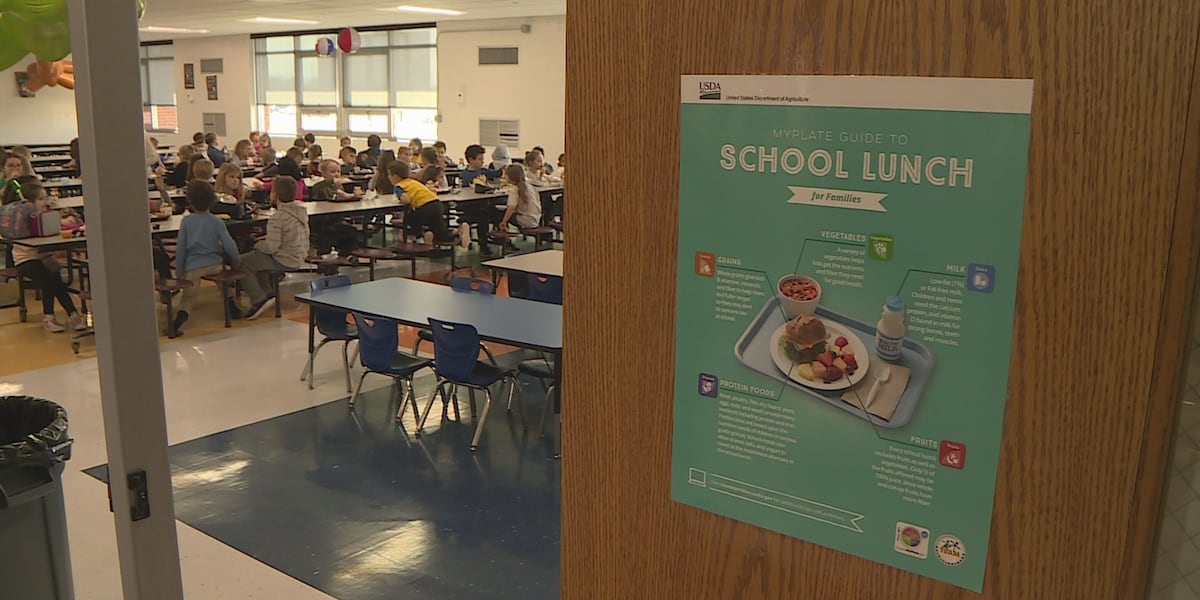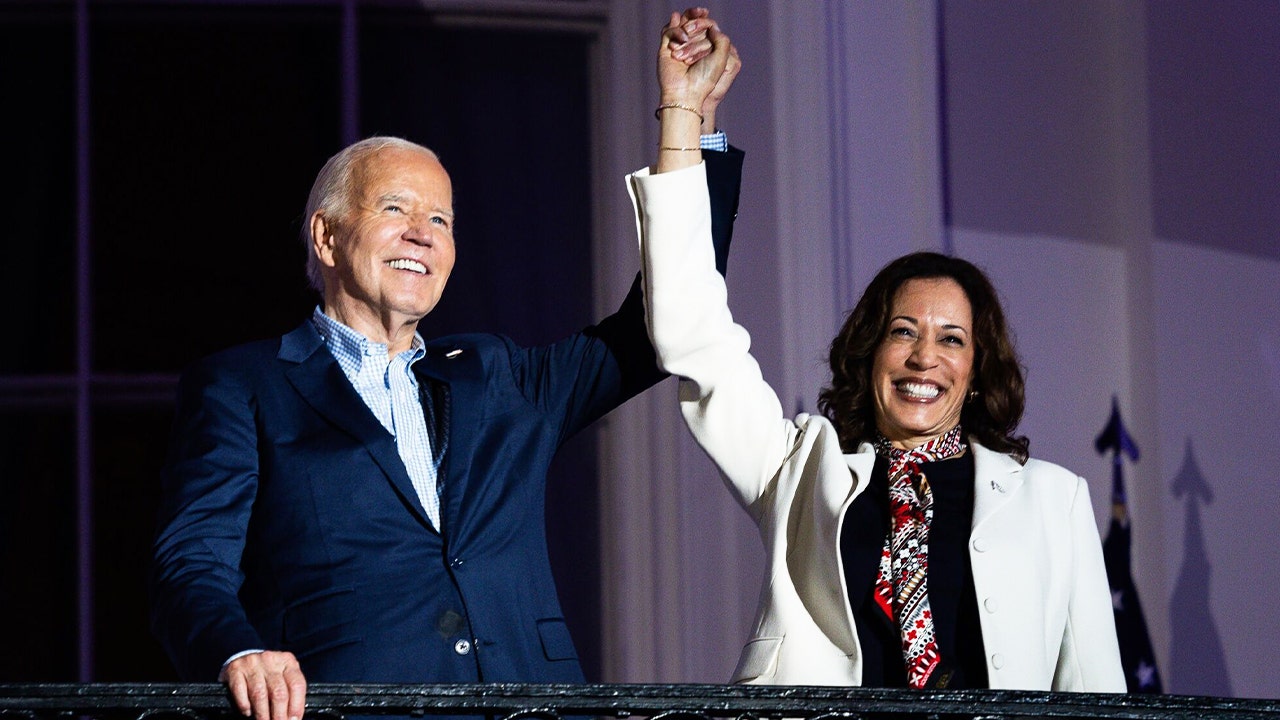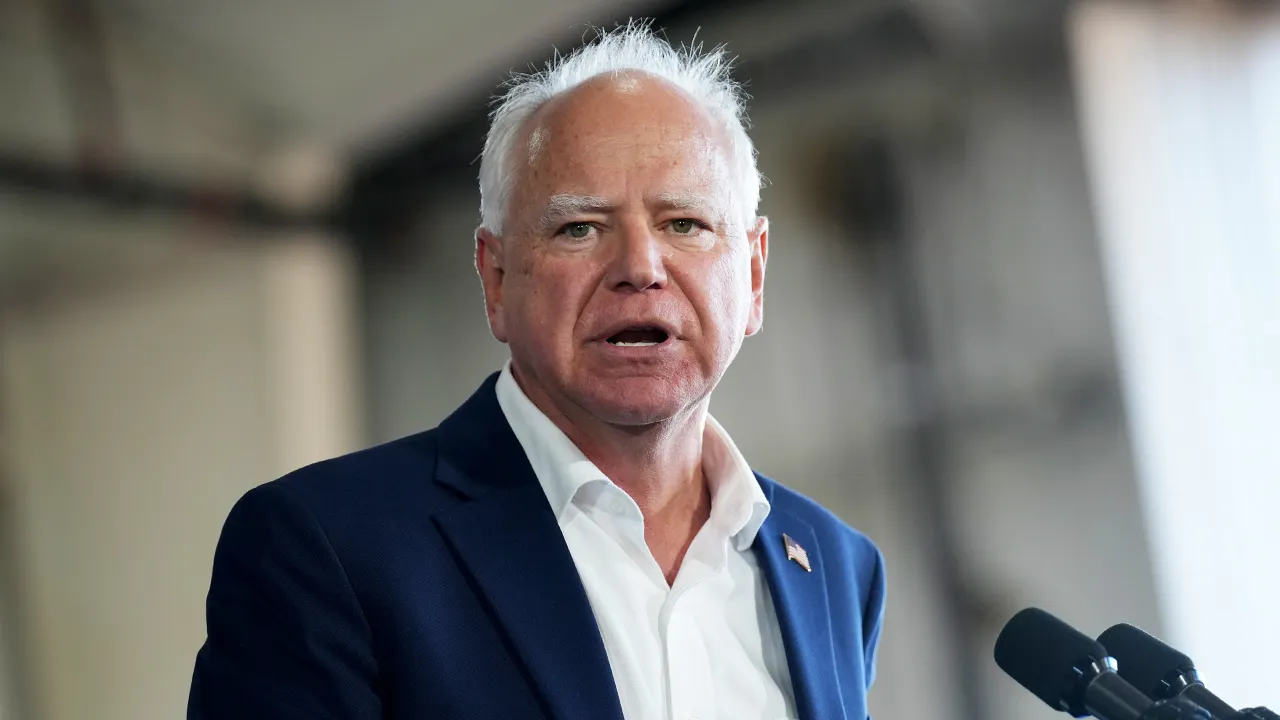Culture
Vaseline, hairspray, shaving foam… What's the best substance to put on goalkeeper gloves?

Andre Onana returned to competitive football this weekend in the Community Shield against Manchester City, with his side losing on penalties at Wembley.
Last season it emerged the Manchester United goalkeeper uses Vaseline on his gloves, which raised several other questions for me. What other substances do we ’keepers put on our gloves to try to gain an advantage? Is there anything in doing so that violates the laws of the game?
I knew I needed help from someone with better knowledge of the laws of the game than me. Thankfully, over my playing career I was fortunate to build up enough goodwill with a few professional referees that I was able to enlist one of them — Fredrik Klitte, who has been a ref for close to 25 years in Sweden, including the last decade at the top level.
“It’s legal for a goalkeeper to use Vaseline from a referee’s point of view, as long as the rule book doesn’t say otherwise, which it doesn’t today,” Klitte said.
When I asked him if he had ever encountered a goalkeeper trying to use any substances on their gloves before, his answer was a firm “no.” He did admit, however, that it could have happened without him knowing. “The referee isn’t required to check a goalkeeper’s gloves in the same way they are supposed to check a player’s studs or shin guards before a match, so it’s possible,” he said.
Onana turns to the Vaseline (Robin Jones – AFC Bournemouth/AFC Bournemouth via Getty Images)
Klitte went on to explain there is a line in the rule book that states the referee does have the option to show a yellow card for unsportsmanlike behaviour if they discover a goalkeeper has handball players’ resin (which affords greater grip) on their gloves, for example. But that is rarely, if ever, enforced. “Then you can interpret it as a goalkeeper using incorrect equipment that must then be corrected,” he said. “However, you probably still don’t have support for that, due to the way the rule is currently written.”
Before I let him go, I asked Klitte one more time just to confirm, “So, technically speaking, a goalkeeper could use whatever they wanted on their gloves to try to improve their grip?”.
“Yes,” he said confidently. “There is nothing in the laws today that say otherwise.”

Vaseline sighted at a Premier League game (Michael Regan/Getty Images)
So with that established, it was time to experiment.
I wanted to test things that would be practical and we could realistically see a goalkeeper use. That means substances that wouldn’t totally destroy the gloves after one use. Therefore, even though I could fathom that handball resin, pine tar, or Stickum (a substance that was used for years in the NFL to assist players in hanging onto or catching the ball before being banned in 1981) would improve a goalkeeper’s grip, at least temporarily, they would almost certainly destroy the pair of gloves involved in the process and not be worth testing.
While I was able to find several different recommendations from fellow goalkeepers who swear by little tricks of the trade to improve their grip, including honey, maple syrup, sugary sports drinks and even homemade pastes, three products were mentioned more often than any others: GloveGlu — a product specifically created for goalkeeper gloves to help improve grip — shaving cream and hair spray. These were the three I knew I needed to try.
The next day, before training with the club where I’m goalkeepers coach, Angelholms FF in the Swedish third division, I ran a few errands around town and picked up a bottle of GloveGlu from the sporting-goods store and a bottle of shaving cream and hair spray from the supermarket. In theory, I could understand why each of these products would work and was excited to try them out for myself to see if there might be something out there better suited for a goalkeeper’s gloves than Vaseline.
When our ’keepers Robin Streifert and Lukas Bornandersson arrived at the training facility, I informed them we had an assignment in training that day: to test a few products and see if any of them would improve our grip on the ball, however, I waited to inform them exactly what it was that we would be testing. The only information I gave them was to bring an extra pair of gloves out to the pitch with them.
There was a consensus the GloveGlu would work, since it was made specifically for goalkeeper gloves, but they were highly doubtful about the shaving cream and hair spray.
Since Robin already had a lot of experience with using Vaseline on his gloves, consistently employing it in both training and matches, I thought he would be the perfect candidate to compare it with the effects of GloveGlu. Lukas on the other hand was still relatively new to the Vaseline idea and was a bit sceptical. Therefore, I wanted him to test it for the first time and see if his experience was anything like Robin’s.
I, on the other hand, would first try out the shaving cream and the hair spray. Then, if I thought it either worth introducing to the training session with Robin and Lukas, we would do so.
When the goalkeepers were done with their warm-up, Robin came up to me and grabbed the GloveGlu, Lukas took the Vaseline and they started to apply them to their gloves.
Robin’s gloves had some age to them, and it had been a while since they had been used, but the GloveGlu suddenly gave them some new life. As Robin clapped his palms together and felt the stickiness of the spray start to have an effect, he nodded his head. “This stuff might actually work,” he said.
The grip initially proved to be good, certainly much better than it would have been without GloveGlu. It took a pair of old gloves that he would never have trusted for a game and made them usable again. However, despite the positive first impressions, the stickiness didn’t last very long.

GloveGlu was effective, but wore off quickly (Matt Pyzdrowski/The Athletic)
It was after just a few rounds of our shooting session when Robin noticed the gloves started to feel silky smooth. Balls that initially were lodging snugly into his gloves, started to become more difficult to catch and often bounced back out and into play. At that point, all he had to do was go and reapply the GloveGlu for it to become effective again, but I could sense his frustration each time he had to do that throughout the training.
Though Robin’s first impressions of GloveGlu were positive, Lukas, on the other hand, was doubtful about the impact Vaseline was going to have almost immediately.
As he bounced the ball up and down and caught it over and over, he shook his head. “It feels like there isn’t an ounce of grip!”, he shouted. “I don’t know how you guys think this is any good!”.
Both Robin and I looked at each other and laughed. It was like we already knew what was going to happen.
After all, when French club Bordeaux’s Swedish goalkeeper Karl-Johan Johnsson introduced the stuff to Robin almost a year ago, he went through the same progression himself. First there is scepticism and doubt, then, intrigue and wonder start to take hold, and by the end of training, nearly every goalkeeper who has ever tried the stuff ends up loving it.
Unsurprisingly, this is exactly what happened with Lukas.
When the ball started smacking safely into his gloves over and over again, it brought a big smile to his face. When he went over to the tub of Vaseline after about 20 to 25 minutes of training and grabbed another glob for the palms of his gloves, Robin and I knew he was hooked.
“OK, OK, you guys were right, this really does work well!”, Lukas said with enthusiasm in his voice.
Toward the end of training, I decided it was time to give the other two products a try.
When I read about shaving cream and hair spray online, those who used them believed they were most effective a few minutes after application. So as Robin and Lukas had a water break and we took a little pause in our session, I took out two sets of gloves and applied shaving cream to one pair, hair spray to the other, and then let them rest, palms up, next to the goal.
While there wasn’t that much I needed to do with the pair that had hair spray on, other than let them dry and rest, I did read that the pair with shaving cream on needed a little more attention. Rather than rubbing the shaving cream into the palm directly, like you would do with Vaseline, I had read it was best to squirt a generous amount onto the palm and then wait to rub it into the latex just before use.

Matt’s gloves after the initial application of shaving cream (Matt Pyzdrowski/The Athletic)
When I went over to the gloves during our next pause in training to check on their progress, it didn’t take long for me to realise that the hair spray wasn’t going to have any effect whatsoever. Though it did appear to create a sticky substance on the palms of the gloves, after just one catch of the ball the effect had entirely worn off and actually left a residue on the palms of my glove which became incredibly slippery.
Though I still decided to give hair spray a shot and had Robin and Lukas pepper me with a few shots, it was clear that catching the ball was going to be an incredibly difficult task. There was no need to explore hair spray any further. It wasn’t going to work.
After taking off my hair-sprayed gloves, I picked up my other pair that had shaving cream on them, put them on, and began to rub the shaving cream into the palms of my gloves until it was absorbed into the latex.

Matt’s gloves after rubbing the shaving cream into the palms a few minutes later (Matt Pyzdrowski/The Athletic)
When I started rubbing my palms together and felt the stickiness take hold, I suspected it was going to work as intended. The palms of the gloves remained moist but also felt a bit sticky after the shaving cream had dried, and after a few bounces of the ball on the grass, my confidence in it grew. I asked Robin and Lukas to come over so I could throw some shaving cream onto their gloves.
Robin, whose gloves were a little older and more broken down than Lukas’ pair, didn’t feel like there was much of an impact. However, when Lukas jumped in goal and started gripping shot after shot, his grin went from ear to ear.
“I don’t know what it is, if it’s mental or if I’m just having a good day, but it really does feel like it works!”, he shouted.
It may sound strange at first that shaving cream could improve the grip of your goalkeeper gloves, but when you understand how latex works, it makes sense.
Without getting too technical, latex is a foam. It is made up of thousands of tiny holes, much like a kitchen sponge. When the materials that make those tiny holes are dry, the latex becomes hard and brittle. When they are wet, the holes expand and the material becomes softer — again, like a sponge. So by adding shaving cream, you are ultimately helping keep the latex moist and sticky and allowing it to do what it was made to do in this case: grip the football.
After facing a few more shots, Robin, Lukas and I sat down next to the goal to discuss our findings.
We quickly agreed that although there was a positive effect to using shaving cream, it wasn’t as effective as Vaseline or GloveGlu and it was hard for us to imagine it would have the same effect as Vaseline in wet weather (Vaseline is designed to moisturize the latex, but also act as a repellent to prevent dirt and grime from covering the palms of your gloves when it rains).
Plus, in a game situation, when your time is so limited, you would never have enough of a break in play to go to the side of the goal and apply it effectively, whereas GloveGlu and Vaseline were much easier to apply quickly and see immediate results.

Robin, right, and Lukas discussing their experiments (Cherie Mårtensson/Ängelholms FF)
It’s been almost a year since Robin first started using Vaseline, and though it’s still an important part of his routine, his use of it has slightly changed. He found out first-hand that the negative side of using Vaseline every day is that it can damage the latex on your gloves and reduce their durability. Though Vaseline is initially moist when you apply it, when it dries out, your gloves are in danger because the Vaseline starts to be absorbed into the pores of the latex, dries it out, and can crack the gloves.
“At the beginning, I was putting Vaseline on my gloves every day, but it didn’t take long for me to realise that it wasn’t sustainable in the long run because I was going through a new pair of gloves every other week,” he said.
He would go on to explain, however, that despite Vaseline being tough on the durability of his gloves, throwing some of it on an old pair of gloves did seem to bring some life back to them. Which was something Lukas could also confirm after his own experience with the stuff.
“I have an old pair that I use now and again in training when it rains and I’m worried my grip will be impacted because of it,” he said. “I throw a dab of Vaseline on them and suddenly they have good grip again. I noticed that today as well. I was unsure what would happen since I was using an old pair of gloves I hadn’t used in a few months, but I was blown away by the results. I haven’t had that good of a grip in my gloves in a long time.”
Despite the negative impact Vaseline can have on the durability of his gloves, Robin did say he still prefers it to GloveGlu because he feels the effect from it lasts longer and gives a more “stable” feeling. However, he did admit GloveGlu works better in dry weather (which is something that can be a problem with Vaseline) and doesn’t damage the latex as much.

Some goalkeepers still stick to using their own saliva (ANP via Getty Images)
Every athlete is always looking for new and innovative ways to uncover marginal gains, and professional goalkeepers adding Vaseline to their gloves is just the latest example of that.
Though the security and trust Vaseline can provide is an incredibly important feeling for every goalkeeper, all of us agreed that it shouldn’t be used with the expectation that it’s suddenly going to fix all your problems on the pitch. It doesn’t matter how much of it you smear on your gloves, it can’t hide poor technique. That’s why it is important to perfect your technique first, then use Vaseline, GloveGlu, or another similar product as an added tool down the line if you feel it’s needed.
Most professional goalkeepers have a glove sponsorship and brands will send them new pairs pretty much whenever they ask for them. So clearly, they aren’t worried about their gloves’ durability or about what happens to them after using Vaseline.
That’s the biggest reason that we all agreed younger goalkeepers and amateurs might be wise to hold off on using Vaseline on that brand-new pair of gloves and instead save it for a rainy day or when they get a bit old and worn and need a new lease on life.
(Top photo: Charlotte Wilson/Offside via Getty Images)

Culture
Why European soccer headed to the U.S. for preseason – and what comes next?

Through the torrential downpour and thunder rolling in the sky above MetLife Stadium, 82,154 fans bore the brunt of a mid-summer storm to watch Barcelona beat Real Madrid 2-1 in a thrilling preseason friendly between two rivals that has become somewhat of a tradition in the United States.
It did not matter that some of the Spanish clubs’ biggest stars were either still on vacation, resting from the recent European Championship and Copa America, or absent on Olympic Games duty for their countries in France. This was still El Clasico and the crowd reveled in watching young stars including Barcelona’s Pau Victor and Nico Paz and veterans such as Real Madrid’s Ballon d’Or winner Luka Modric battle it out on the muddy pitch across the Hudson River from Manhattan for 90 minutes of pure entertainment.
Spectators sang along to the club’s chants and stadium staff set off fireworks for every goal scored, even those that were later ruled out for offside. It was an impressive reception for a match that, as far as official record-keeping goes, meant close to nothing. But that match last weekend, and dozens of others like it throughout the United States, have come to mean a whole lot to the international soccer ecosystem.
“This is preseason and it’s totally different than the normal Clasico,” Barcelona head coach Hansi Flick told reporters afterwards. “You can see that a lot of players are missing (from) both teams, but at the end (of the day) it’s also really good to have all these players here. The young players… it’s fantastic to have them here.”
Considering the hype seen in New Jersey that night, players’ absences did little to deter fans from flocking to a venue that is the home to New York’s two NFL teams — the Giants and Jets. Enthusiasm for the match was not impacted, even when it was halted after just 12 minutes of play because of severe weather, not resuming for an hour.
Fans took shelter at MetLife Stadium when the Barca-Real match was suspended (Charly Triballeau/AFP via Getty Images)
Flick was addressing reporters inside a glass-enclosed conference room, with fans gathered around and peering through those translucent walls at the stadium which will host the 2026 men’s World Cup final. The supporters’ cheers muffled journalists’ questions, with security repeatedly asking them to quiet down. Fans lingered in and around the stadium long after the game ended.
This was just one of the many high-profile soccer friendlies that took place across the U.S. this summer, with European football clubs jet-setting coast to coast to compete on pitches inside MLS, NFL, college football and even MLB stadiums. Teams from the English Premier League, Spain’s La Liga, Serie A in Italy and the German Bundesliga (plus Wrexham of the English Football League) held glitzy press tours and community events across the country. The painstaking preparation for Wolverhampton Wanderers’ three-match tour — estimated to have cost £1,050,000 ($1,344,000) in total — was detailed by The Athletic.
A week before Barca-Real, Manchester City and AC Milan played inside Yankee Stadium before a crowd of 46,122 fans. The Italian side won 3-2 with U.S. men’s national team captain Christian Pulisic coming on in the 80th minute. Pulisic has understandably been the face of Milan’s own tour, while City boasted players including Norwegian striker Erling Haaland and England international Jack Grealish at fan events around New York City in the lead-up to matchday.

Erling Haaland runs out at Yankee Stadium last month (Stephen Nadler/ISI Photos/Getty Images)
This was a big footballing spectacle, yet the business relationships between the professional clubs and baseball’s Yankees run deep.
In 2013, Manchester City and the Yankees announced plans to establish an MLS expansion side, NYCFC. City Football Group owns both clubs, as well as a portfolio of others around the world.
As for Milan, the team also has deep ties to American businesses. The club is owned by New York-based RedBird Capital Partners and, in 2022, the Yankees purchased a minority stake. That same year, the two teams announced plans to begin selling AC Milan products inside Yankee Stadium. Milan’s CEO Giorgio Furlani said to reporters in New Jersey last week: “I would confidently say we are the most American club of Italian clubs, and we’re very happy to be here.”

Barcelona and AC Milan played in Baltimore, Maryland, on August 6 (Samuel Corum/AFP via Getty Images)
Wrexham, a Welsh club from the English third tier made globally famous by a documentary series about them and co-owned by American actor Rob McElhenney and Ryan Reynolds, the Canadian star of the Deadpool movie franchise, have played Chelsea, another Premier League club in American hands, in the States in successive summers. When the sides met in July 2023 at Chapel Hill in North Carolina, 50,596 were in attendance. Twelve months on, for a 2-2 draw at Levi’s Stadium in Santa Clara, California, the announced attendance was 32,724.
How many times can these teams keep going back to the U.S. well?
American ownership in international football has become a growing trend, with a prominent example in Premier League side Arsenal’s owners, the Kroenke family, through their Kroenke Sports & Entertainment company (KSE). As well as Arsenal, the KSE sports conglomerate includes the NFL’s Los Angeles Rams. The Rams’ SoFi Stadium has also become a home of sorts for Arsenal, having played there in the past two preseasons. Arsenal Women is also going on a U.S. preseason tour this month, albeit on the east coast, to play NWSL side Washington Spirit and Women’s Super League rivals Chelsea.
The U.S. is a key market for Arsenal and there are more synergies between the twin jewels in the Kroenkes’ multi-sport crown.
The two sides held a ‘Football meets Football’ community event at the Rams’ training complex, with Rams head coach Sean McVay and Arsenal manager Mikel Arteta both taking part, as well as the two team captains, Martin Odegaard and Cooper Kupp. KSE figurehead Stan Kroenke and son Josh, an Arsenal director, were also present. McVay, only 38, and Arteta, still relatively new to Premier League management at 42, have a good relationship and speak fairly often.

(Left to right) Josh Kroenke, Kupp, Arteta, McVay, Odegaard and Stan Kroenke on July 26 (Stuart MacFarlane/Arsenal FC via Getty Images)

GO DEEPER
Inside Arsenal’s U.S. tour: Calafiori scramble, ‘young vs old’ table tennis – and Justin Bieber
The 62,486 crowd for Arsenal’s 2-1 win over Manchester United at 70,000-capacity SoFi two weeks ago was, however, a little down on what might have expected and Arteta commented afterwards on the small dimensions of the pitch, which had only recently been laid in the NFL arena and will be replaced by the time the 2026 World Cup, which the U.S. will co-host with Canada and Mexico, comes to town. The cheapest tickets were more than $100 (£78) each, with a 10 percent emissions tax on top of that.
James T Butts, mayor of Inglewood, the district of Los Angeles where the stadium is located, wants soccer to keep coming back to LA. “I may be biased but I think this is the pre-eminent stadium in the world right now,” he told reporters. “I’ve discovered that soccer fans are more rabid than NFL fans, and so we love every time there is a soccer game. It adds to the ambience of the city. Adds to the viability of the project. We love it.”
The ability to watch two top-tier European clubs play in your local stadium remains a rare experience for Americans.
The University of South Carolina hosted Liverpool’s 3-0 win against Manchester United last weekend, with a recorded attendance of 77,559. In Philadelphia a few days earlier, Liverpool beat Arsenal 2-1 in front of 69,879 fans at Lincoln Financial Field, home of the NFL’s Philadelphia Eagles — the largest crowd for a soccer match at the venue.

GO DEEPER
Inside the sales pitch that took Liverpool and Manchester United to a U.S. college town
Liverpool also has U.S.-based owners in Fenway Sports Group and chose to base themselves in Pittsburgh (where they beat Spain’s Real Betis 1-0 before a 42,679 crowd), Philadelphia and Columbia, South Carolina this summer as they returned to American soil after a five-year absence. “It’s an incredibly important market, and one that we still think has tremendous opportunity for growth,” Liverpool CEO Billy Hogan told The Athletic last month.

Manchester United and Liverpool walk out in Columbia, South Carolina (Grant Halverson/Getty Images)
Beginning next year, clubs from Europe and elsewhere will be coming to the U.S. in the summer for games far more important than a few preseason friendlies.
“For the fans, it becomes even more special because they see the two big teams, two big clubs play against each other,” says Sweden legend Zlatan Ibrahimovic, who works as an adviser for AC Milan’s U.S. ownership, having played in the States for LA Galaxy of MLS. “Especially over here in the U.S. — because normally this (such a fixture) would be a Champions League game.”
But as the market continues to grow, with the first edition of the revamped and greatly expanded Club World Cup to be played in the United States next summer, a Champions League-level match happening here does not appear that far-fetched.
In May, an attorney representing soccer’s world governing body FIFA said in federal court that a rule change allowing domestic league matches to be played abroad could come “before the end of the year”. This was declared during an in-court status conference for an ongoing antitrust lawsuit between New York-based promoter Relevent Sports and U.S. Soccer, the game’s national federation.
At the time, FIFA declined to elaborate on the specifics of what its attorney was referencing. Just two weeks later, however, at its annual congress in Thailand, FIFA approved a working group that was tasked with considering rule changes for “authorizing interclub football matches or competitions”, and the criteria to be applied for signing off on such competitions.
That lawsuit filed by Relevent stems back to summer 2018 when it attempted to level up from U.S. preseason friendlies.
The promoter announced plans to host a regular-season La Liga match between Barcelona and Girona in Miami, Florida. But Barcelona later withdrew from this commitment when FIFA announced a policy barring domestic leagues from playing regular-season games outside of a club’s home territory.
A few months later, Relevent attempted to host two Ecuadorian clubs for an official league match on American soil. U.S. Soccer denied its sanction, citing FIFA’s policy. Relevent then sued FIFA and U.S. Soccer on antitrust grounds – and while FIFA is no longer a defendant in the suit, Relevent and U.S. Soccer are slated for a settlement conference in this matter next month.
While the antitrust lawsuit crawled through the American legal system, reaching the Supreme Court last year, the business of international friendlies in the States only grew larger. But a preseason friendly is not the same as an official match that truly matters, as many coaches referenced in their preseason tours this summer.
That becomes trickier to imagine, though, when considering the already-congested football match calendar. Any trip over from Europe or South America would have to be an isolated occurrence, similar to how the NFL hosts only a handful of international matches each season.
But those in the game see the existing crowded calendar as an inevitable part of football’s growth. Manchester City manager Pep Guardiola said as much when asked about players struggling to play at their peak in every match because of the schedule.
“The clubs have to travel to make our brand (known) around the world,” Guardiola said from the Yankees’ press conference room. This may be the new norm, but it didn’t happen overnight. “It happened for five, six, seven years,” Guardiola said. “It is what it is, and we have to adapt.”
It seems inevitable that, pretty soon, they will have to adapt yet again.
(Top photo: Charly Triballeau/AFP via Getty Images)
Culture
Jordan Chiles, in an Olympic gymnastics comedy of errors, gets another raw deal

We ask a lot of our Olympic athletes — to perform with grace and humility, to carry the Olympic spirit even as they pursue their own individual goals; to abide by the rules, and to accept their fates, however they may go, with dignity.
Jordan Chiles has exemplified all of that in these Paris Olympic Games.
Is it so much to ask the people who hold her Olympic dreams in their hands to do the same?
What is happening — and has happened — to Chiles and, by extension, Romania’s Ana Bărbosu, is a travesty of borderline technical malfeasance that has toyed with the emotions of two women who have done nothing wrong.
On Monday afternoon at Bercy Arena, Chiles finished her floor routine in the event final, scoring a 13.666, just out of reach of the 13.700 awarded to Bărbosu and Sabrina Maneca-Voinea and off the medal podium. Bărbosu, whose execution score was higher than her teammate’s, was awarded the bronze. Cecile Landi, Chiles’ coach, however, asked the judges to review the difficulty for one of the elements in Chiles’ floor routine. The request went ahead to the technical chair who agreed that, upon review, Chiles was not scored appropriately. Immediately her 13.666 was upped to a 13.766. She was the bronze medalist, not Bărbosu.
While Chiles sobbed in joy and Simone Biles enveloped her in a bear hug, Bărbosu cried in agony, gutted by the review that demoted her to the dreaded fourth position. It was the Olympic experience writ large, in all of its pain and glory.
Now it turns out, the U.S. failed to beat the buzzer, according to a Court of Arbitration for Sport ruling revealed Saturday. Inquiries, by rule, must be filed within a minute of the conclusion of a routine. Landi asked too late — four seconds too late, according to a USA Gymnastics source. Which, hey, that’s more than fair — even in a subjective sport such as gymnastics, a deadline is a deadline.
But the trail to that result is a comedy of errors, none perpetuated by the gymnasts involved, and yet they are the only ones made to suffer.
Consider the lunacy: Chiles’ difficulty was erroneously scored and corrected only because a coach suggested the judges take a second look, but that judging mistake has since been disregarded because the Romanians realized that someone else failed to keep his or her eye on a clock, and allowed an inquiry to go forward when it shouldn’t have. The result: Chiles is back to a 13.666 (even though her difficulty should have made it a 13.766 in the first place), and the Court of Arbitration for Sport punted the whole thing, asking FIG, the international gymnastics governing body, to figure out who gets the bronze. The Romanians asked that all three gymnasts share the bronze, which seems fair, but at best requires an asterisk next to their names.
This all took five days to sort out. Five glorious days for Chiles, who already had been made to endure the rollercoaster of gymnastics rule foolishness. On the first day of competition, during the qualification round, Chiles finished fourth in the overall all-around standings. The top 24 women quality; except Chiles, while fourth overall, was third on the U.S. team, and Olympic gymnastics apparently likes to treat itself more like 4-year-old Sunday afternoon soccer, where everyone gets to participate. Each delegation can only send two women forward to the final, which meant that Chiles’ teammate, Sunisa Lee, who topped Chiles by 0.067, got the nod and Chiles did not.
Simone Biles and Jordan Chiles celebrate after Chiles’ floor routine difficulty score was changed to make her the bronze medalist. Now, that’s all in question. (Naomi Baker / Getty Images)
A devastated Chiles spent two days licking her wounds but then, in a real-time show of the Olympic spirit, returned to help the U.S. secure a team gold two days later. She later showed up to cheer on Lee and Simone Biles in the all-around, while focusing her own energies on the event final, in search of her first personal medal.
Chiles competed last in the floor final and will be the first to admit she could have hit her routine more cleanly. She was packing up her things as Landi put in the inquiry and when the announcer flashed her new score, she finally was given her moment. But Chiles instead opted to celebrate her peers and not herself. From her side of the podium, Chiles caught Biles’ eye hatching a plan, and when Brazil’s Rebeca Andrade stepped to the podium for her gold medal, Chiles and Biles bowed.
It was an extraordinary act of grace conceived by a woman who had shown nothing but grace all week. For five glorious days, Chiles felt the beautiful weight of an Olympic medal around her neck, and did the very American version of a victory lap, visiting Disneyland Paris and making the morning-show circuit. She was, as she declared herself, That Girl.
That Girl just announced she’s taking a break from social media to concentrate on her mental health. The people in charge seem to have finally done what nothing else could: douse Jordan Chiles’ Olympic spirit. Her last post: a string of broken-hearted emojis.
(Top photo of Jordan Chiles after the floor routine at the Paris Olympics: Jamie Squire / Getty Images)
Culture
Williams, Daniels shine in NFL preseason debuts

By Jenna West, Kevin Fishbain and Ben Standig
Saturday’s preseason action gave NFL fans their first glimpse of quarterbacks Caleb Williams and Jayden Daniels, the Nos. 1 and 2 picks of this year’s draft, and the rookies delivered.
The Buffalo Bills hosted the Chicago Bears, who played Williams for the entire first quarter. He delivered a throw late in the quarter that made everyone’s eyes go wide when Williams rolled to his right and, on the run, threw a 26-yard pass to Cole Kmet. It might’ve been slightly behind Kmet, but the arm strength to make that throw while moving to his right is rare.
Both of Williams’ drives ended in field goals, giving the Bears an early lead against the Bills, who started Josh Allen.
Williams finished with 4 of 7 with 95 throwing yards, while he added one carry for 13 rushing yards. Backup Tyson Bagent took over in the second quarter.
Caleb Williams is MONEY on the run.
📺: #CHIvsBUF on @NFLNetwork
📱: Stream on #NFLPlus pic.twitter.com/otxvQ2oyCV— NFL (@NFL) August 10, 2024
In New York, Daniels and the Washington Commanders took on the Jets. The anticipation for Daniels’ debut, even in the preseason, became must-see TV from the moment Washington drafted the reigning Heisman Trophy winner. His dual-threat capabilities shined on the opening possession.
Daniels, a passer who runs, uncorked a perfect 42-yard strike down the right side to wide receiver Dyami Brown on third-and-six to New York’s 24-yard line. Facing third-and-three from the Jets’ three-yard line after a pair of first downs, Daniels faked a handoff on the zone read and bounced outside for an easy touchdown run to the right corner of the end zone.
Jayden Daniels keeps it for the TD on his opening drive 🔥 @JayD__5
📱: Stream #WASvsNYJ on #NFLPlus pic.twitter.com/HbRsYFo9m6
— NFL (@NFL) August 10, 2024
That was all the coaching staff needed to see, especially with a shorthanded offensive line; Washington’s top three tackles were ruled out. Daniels finished 2-of-3 for 45 yards with the three-yard scamper on the 11-play, 70-yard opening drive. Marcus Mariota took over on the next possession and Daniels’ day was over.
How did Williams look?
It looked similar to his training camp struggles when Williams dropped back for his first NFL pass. The pocket eventually collapsed, he was forced to scramble, Darnell Wright was flagged for holding and Williams eventually threw it away as he got to the sideline. But he kept his eyes downfield the entire time, and two plays later, he calmly went through his reads before hitting DJ Moore for a first down on third-and-12.
On the next play, Williams didn’t panic against the rush and got the ball to D’Andre Swift on a screen pass. It might’ve been a no-look pass, too. Swift took it 42 yards.
The following drive went 74 yards on 12 plays and featured two more Williams completions and a 13-yard scramble on third down — when Williams used his slip n’ slide skills to slide in the open field. — Kevin Fishbain, Bears staff writer
Caleb Williams’ first completion is a laser for a first down
📺: #CHIvsBUF on @NFLNetwork
📱: Stream on #NFLPlus pic.twitter.com/934KG1UBTw— NFL (@NFL) August 10, 2024
What ignited his throw to Kmet?
An illegal contact on third down when Williams tried to find wide receiver Rome Odunze ignited that drive. I noticed Williams was pretty adamant a flag be thrown, and he was fired up about the new set of downs. Then he got to work. Kmet and Moore dropped would-be completions, and when Williams’ heave to Odunze on third down in the back of the end zone was too high, you could tell Williams saw an opening and wanted it.
The offense didn’t have any pre-snap penalties, which was a priority for head coach Matt Eberflus. While Williams would’ve liked to have found the end zone, he did plenty to show the potential of what’s to come. — Fishbain
How is Daniels settling in with Washington?
Passing highlights or low moments typically define the perception of a quarterback, especially for a rookie arriving on the scene. Yet the other aspects of the job that require smarts and maturity stood out to coach Dan Quinn in training camp.
The pass to Brown was a strong example. Speaking on the local television broadcast in the first half, running back Austin Ekeler said Daniels checked out of a screen pass to target the receiver running long.
“I had high expectations for (Daniels) coming in,” Quinn said earlier in the week, “but I would say he’s definitely surpassed even my expectations of the readiness, the command. I knew he was going to be cool, knowing the system. He’s just got that way about him.”
The Jets sat 28 players for Saturday’s preseason opener while the Commanders sat 11, including tight end Zach Ertz. That’s important context, especially since Washington’s offense generated minimal yards in Thursday’s rain-soaked joint practice against New York’s first-string defense. However, Daniels displayed poise and steady decision-making. He continued to protect the ball, a habit that’s been constant all training camp.
“It feels like the game is starting to slow down for (Daniels) even more,” McLaurin continued. “Coming in, he had a great feel (for) his ball placement and his anticipation. I think that’s what really sets him apart.
As offensive coordinator Kliff Kingsbury installed more of the system, Daniels began showing off his arm talent with pinpoint throws down the field. The completion to Brown was quite the example.
Jayden Daniels launches it DEEP on his second throw
📱: Stream #WASvsNYJ on #NFLPlus pic.twitter.com/tGSoMxc4gI
— NFL (@NFL) August 10, 2024
Teammates have praised Daniels’ work ethic — the 23-year-old is among the first to the team facility before practices — and locker room camaraderie. The rookie arrived for Saturday’s game in a Doug Williams jersey. Williams won the 1987 Super Bowl with Washington and currently works as a senior advisor to the team. — Ben Standig, Commanders senior writer
Will Daniels get the starting gig?
Quinn has yet to name the starter for Washington’s Week 1 matchup at the Tampa Bay Buccaneers. There is no drama here. Daniels will get the gig. He’s earned the opportunity. That’s different from saying he will light up the league from the jump. He’ll need help, and the offensive line questions remain. After one preseason drive, so do the sky-high expectations. — Standig
Required reading
(Photo: Mark Konezny / USA Today)
-

 News1 week ago
News1 week agoVideo: Biden and Harris Greet Americans Released From Russia
-
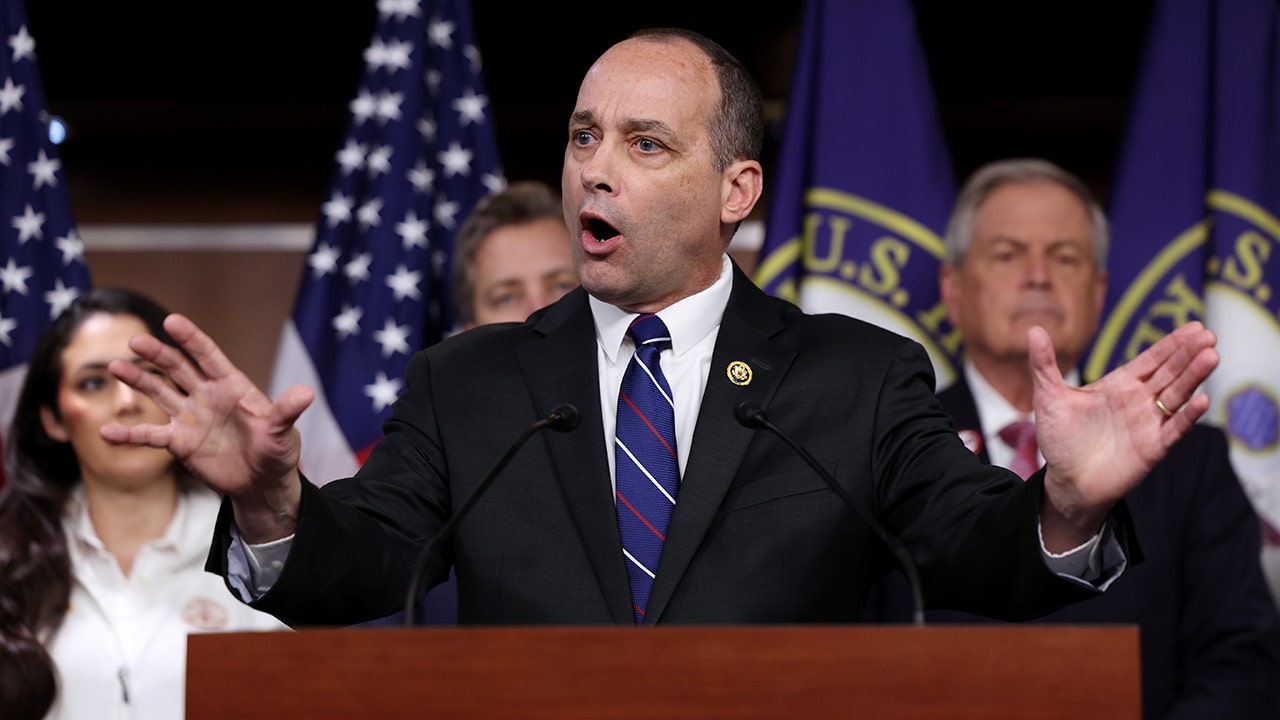
 Politics1 week ago
Politics1 week agoHouse Freedom Caucus chair ousted by Trump-backed challenger in Republican primary showdown
-

 Movie Reviews1 week ago
Movie Reviews1 week agoIt Ends With Us Movie Reviews: Strong First Reactions Get Shared Online
-

 News1 week ago
News1 week agoKamala Harris raises more than double the donations of Donald Trump
-

 Politics1 week ago
Politics1 week agoWatchdog claims victory over Pentagon animal testing as lawmakers demand accounting of taxpayer funds
-
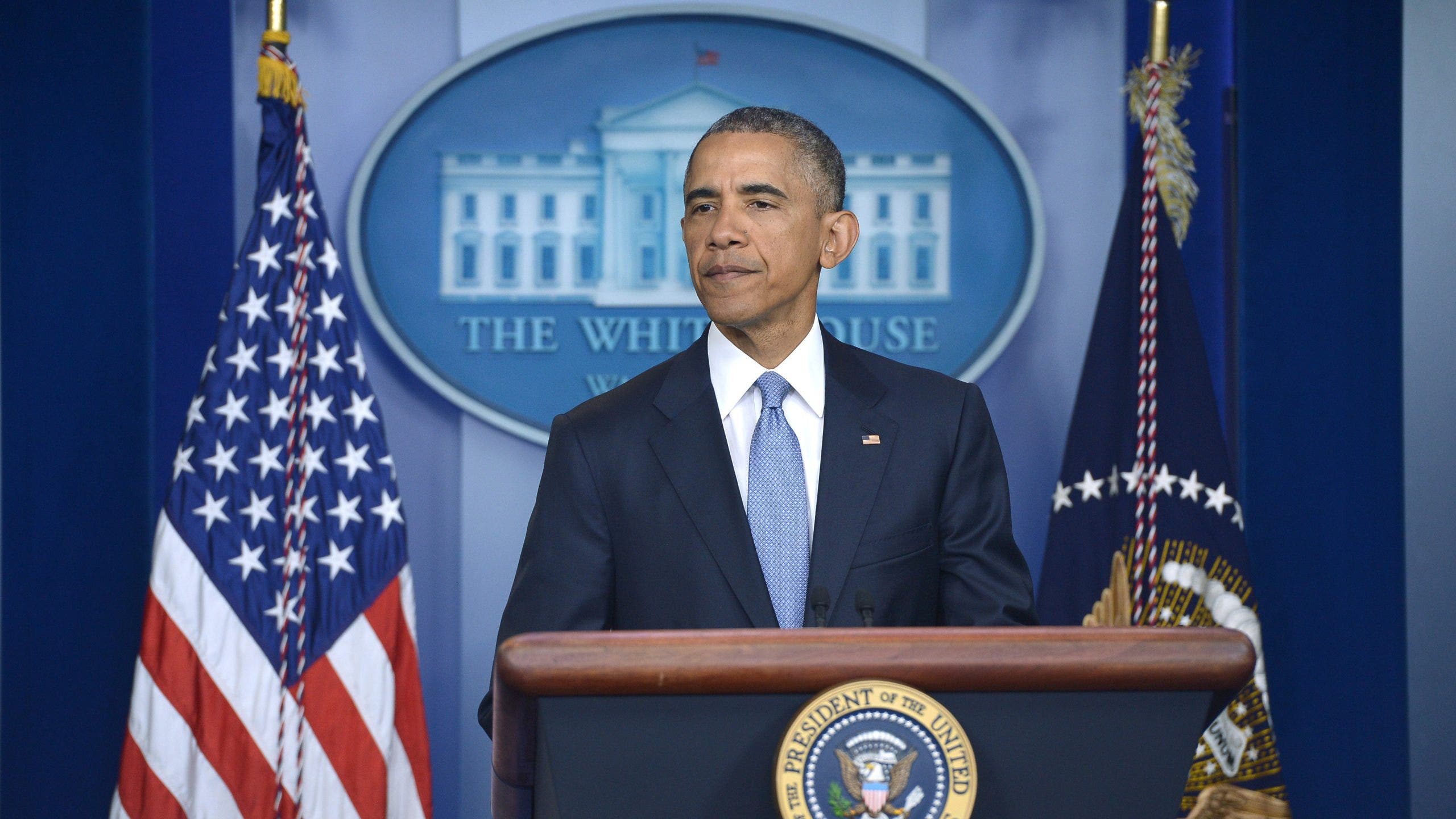
 Politics1 week ago
Politics1 week agoBarack Obama's political career kicked off in the Illinois State Senate, evolved into a two-term presidency
-
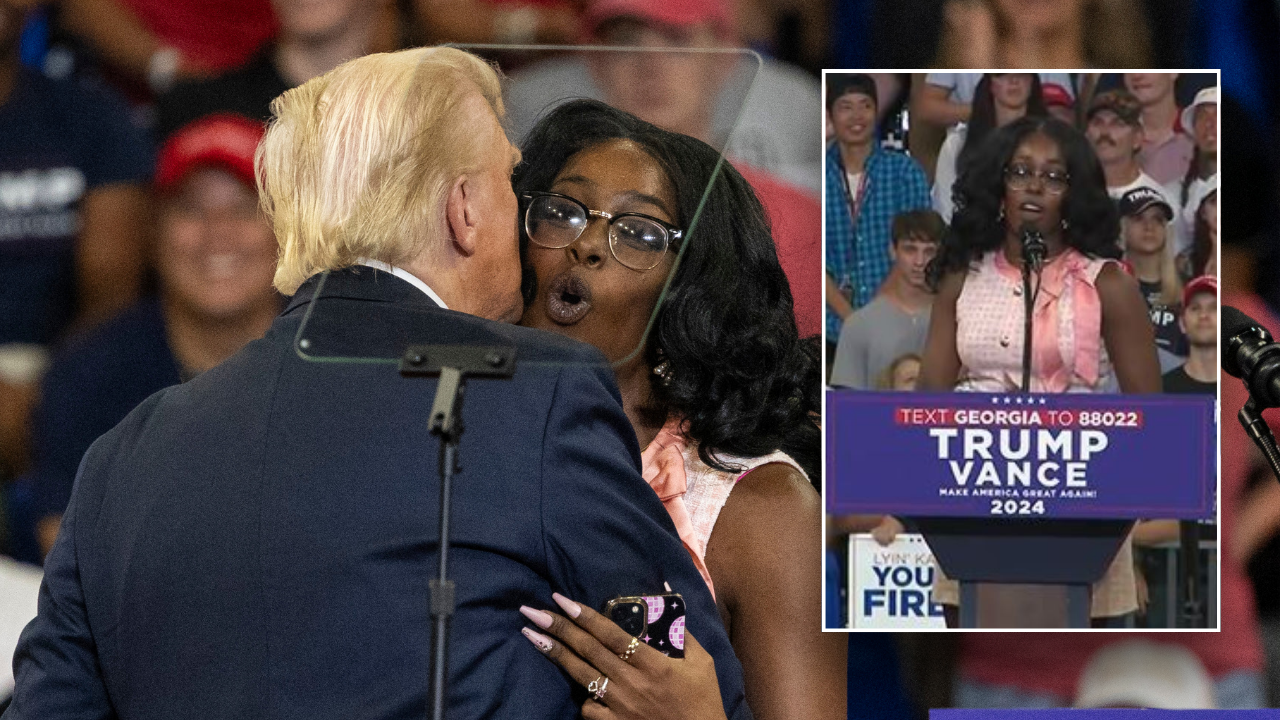
 Politics1 week ago
Politics1 week agoGeorgia activist steals the show after being introduced by Trump at Atlanta rally: 'Incredible'
-
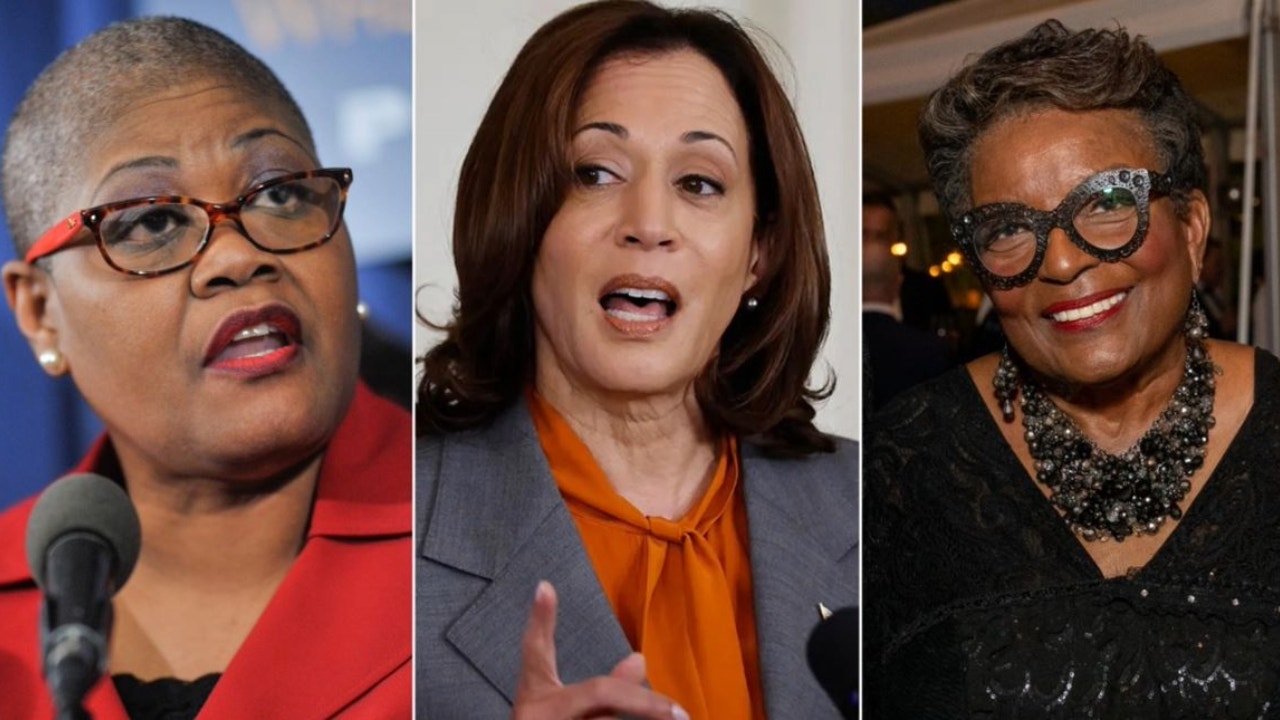
 Politics1 week ago
Politics1 week ago'F— the White women': Black activists tied to VP Harris could derail Dem 'unity' message with past rhetoric







